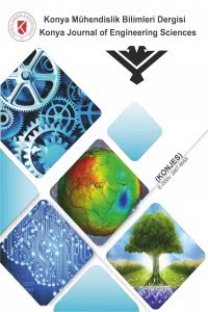GPS efemeris bilgisinin göreli konumlamada koordinatlara ve baz bileşenlerine etkisi
GPS ephemeris effects of relative positioning on the coordinates and baseline components
___
- Federal Geodetic Control Committee (FGCC), 1989, Geometric Geodetic Accuracy Standards And Specifications For Using GPS Relative Positioning Techniques, Version 5.0, p:48
- Geodetic Survey Division, 1992, Guidelines And Specifications For GPS Surveys, Canada Centre For Surveys, Mapping And Remote Sensing Sector, Energy, Mines And Resources Canada, s.63, Ottawa
- Inter-Governmentel Committee On Surveying and Mapping (ICSM), 2002, Standards and Practices For Control Surveys (SP1), Version 1.5, Inter-Governmentel Committee On Surveying and Mapping, ICSM Publication No:l, s.89, Avustralya
- International GPS Service (IGS), 2003, IGS ProductsTable, GPS Satellite Ephemerides, http://igscb.jpl.nasa.gov/components/prods.html
- Kınık, İ., 1999, GPS Ölçme ve Değerlendirmelerinde Hata Kaynakları Üzerine Bir İnceleme, Doktora Tezi, Yıldız Teknik Üniversitesi Fen Bilimleri Enstitüsü, İstanbul
- Kahveci, M., Yıldız, F., 2001, Global Konum Belirleme Sistemi Teori-Uygulama, Nobel Yayın Dağıtım, s.184, Ankara
- Tuşat, E., 2003, Büyük Ölçekli Harita Yapımında Jeodezik Amaçlı GPS Ölçü ve Hesap Standartlarının Araştırılması, Doktora Tezi, Selçuk Üniversitesi Fen Bilimleri Enstitüsü, s.179, Konya
- ISSN: 1300-5200
- Yayın Aralığı: Yılda 4 Sayı
- Başlangıç: 2018
- Yayıncı: -
İnsan mandibulasında sonlu elemanlar metodu kullanılarak gerilme analizi yapılması
ABDULKERİM İLGÜN, Hasan Hüsnü KORKMAZ, Sıddık MALKOÇ, Faruk Ayhan BAŞÇİFTÇİ
Doğankuzu (Seydişehir) boksit ocağında süreksizliklerin ve kaya kütlesinin incelenmesi
Alparslan TURANBOY, Hakan DALER
Kanat Burak BOZDOĞAN, ALPER SEZER, Pelin AKLIK
Edirne Kaleiçi geleneksel konutlarının plan ve cephe özellikleri
Deprem yükü etkisi altında kalan çatı kalkan duvarlarının davranışı
MEHMET KAMANLI, FATİH SÜLEYMAN BALIK
Lületaşı işletme atıklarının kurşun gideriminde kullanılabilirliğinin incelenmesi
NİHAL BEKTAŞ, MEHMET SALİM ÖNCEL
Orta Anadolu Kapalı Havzasının yıllık ortalama akımlarının stokastik modellemesi
GPS efemeris bilgisinin göreli konumlamada koordinatlara ve baz bileşenlerine etkisi
